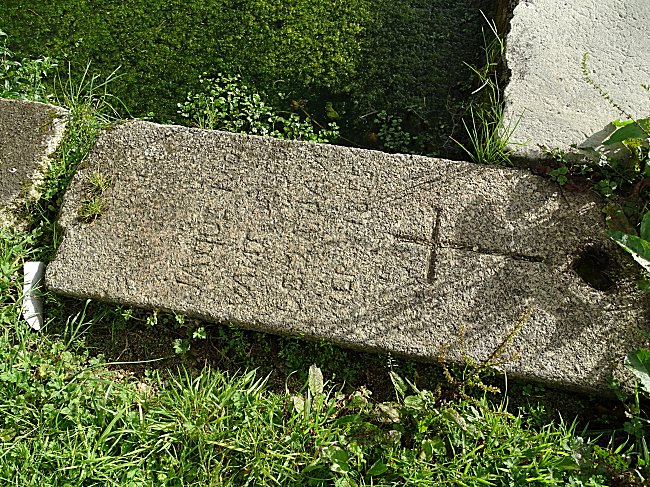Access :
From Le Conquet, take the direction of Brest and turn left towards St-Renan. At the top of the hill, leave this road and take the D 28 towards Plouarzel. Cross Ploumoguer. Just before Plouarzel, at the roundabout, turn left towards Trézien. 1.5 km after the wind turbines, take the 1st road on the right towards the Church. Park on the right side after 300 m near the old lavoir.
From St-Renan, take the D5 towards Plouarzel. Cross this village and turn left towards Le Conquet. At the roundabout continue opposite towards Trézien. 1.5 km after the wind turbines, take the 1st road on the right towards the church. Park on the right 300 m near the old lavoir.
Ancient, many and unknown small monuments
See our page dedicated to the stèles gauloises du Second Âge du fer.
The stele is located right next to the fountain that fed the lavoir. It is a truncated pyramid originally 1.20 m high, with a quadrangular section, carved from a granite that has suffered damage over time. It is partially buried and covered with lichen.
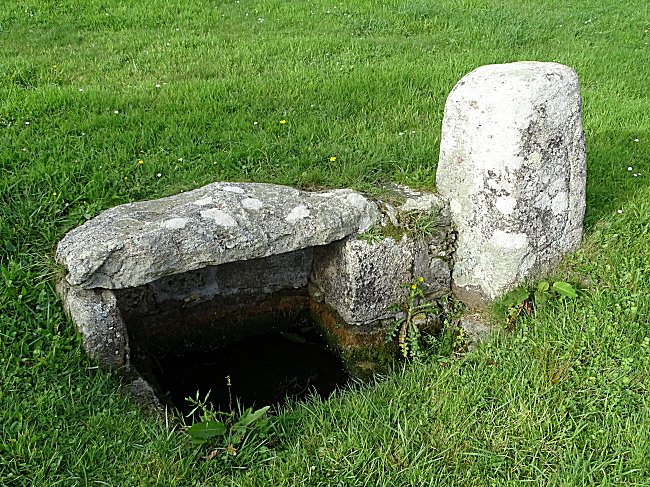
In 1925, when archaeologist Etienne Morel drew it, the stele was not yet buried in the slope and its base was clearly visible. It should be noted that the water from the spring could extend to the stone.
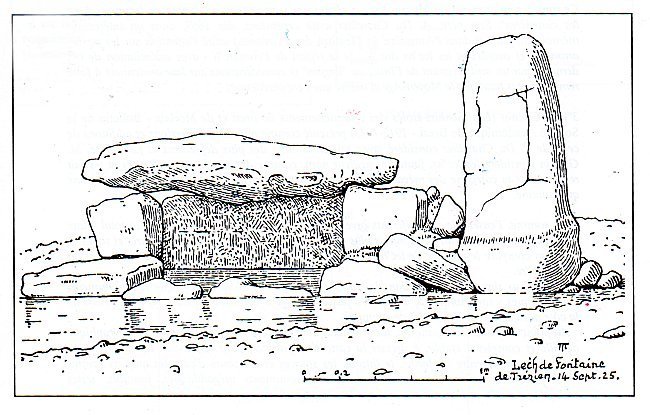
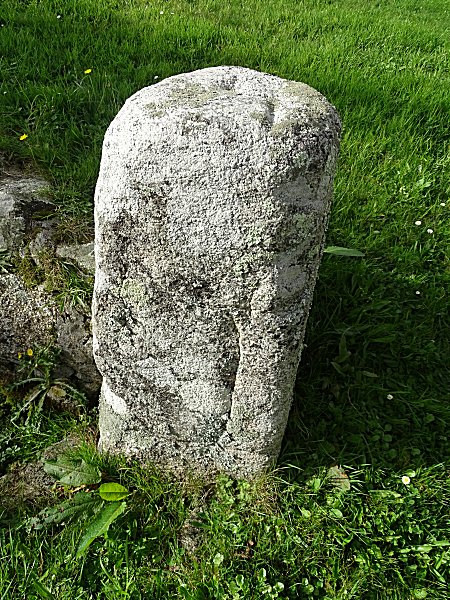
He then pointed out that the stele had a "cavity in the centre of the upper part and a hollowed out cross next to it". Today, the presence of lichen hinders this observation.
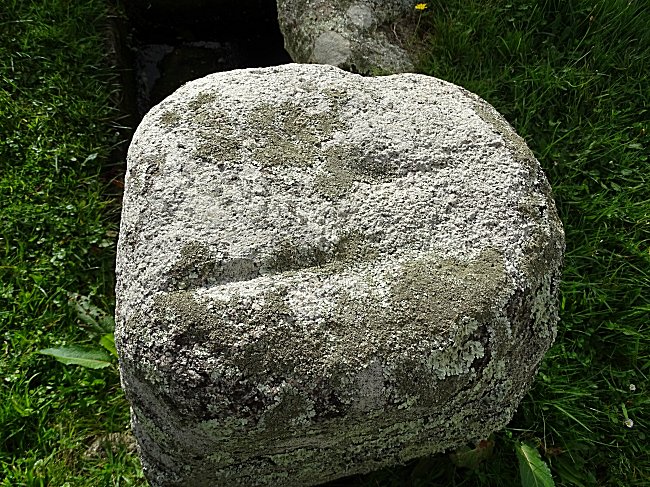
This stele has certainly been removed from its original location. Indeed, it is difficult to see a Gallic population choosing this constantly humid place to bury urns containing the ashes of the deceased. As with most steles, it is not known where the original situation was.
Why did the people move her to that place? Obviously to indicate the presence of the source. As it is currently well identified and protected by low stone walls, it was probably several centuries before this construction that the displacement and implantation of the stele was carried out. It was necessary to avoid that, in the field, the ploughing did not block or pollute the source. Perhaps it was on this occasion that the cross was engraved in order to Christianize this small pagan funerary monument.
The use of a burial stone is not the only one in this area. A few meters away, we can see that the slab of a tomb was used to border the lavoir.
This shows that, more than 1000 years apart, we observe similar human behaviours that no longer respect our ancestors...
